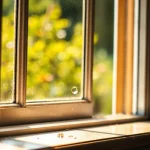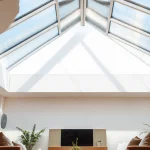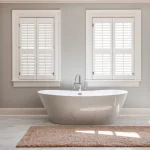Essential maintenance practices for cottage hardwood floors
Caring for hardwood floors in cottages requires a thoughtful approach tailored to the unique challenges posed by both daily use and the UK’s fluctuating climate. Central to effective hardwood floor maintenance is establishing regular cleaning routines that prevent dirt and grit from scratching and wearing down the wood surface. Sweeping or vacuuming at least several times a week helps minimize abrasive particles, while damp mopping with a well-wrung microfiber cloth removes residue without saturating the wood.
In high-traffic zones, prevention of scratches and scuffs is crucial. Utilizing felt pads on furniture legs and encouraging shoe removal indoors can significantly reduce damage. Additionally, placing rugs or runners in busy areas provides a protective barrier against wear. Managing interior humidity and temperature levels is equally important because UK cottages often experience seasonal variations that cause wood to expand or contract, risking gaps or warping. Using reliable humidifiers or dehumidifiers to maintain a consistent environment preserves the wood’s structural integrity and beauty.
Also read : Top benefits of installing electric gates for property security in kent
Adopting these fundamental practices in cottage flooring care greatly extends the lifespan and charm of hardwood floors, balancing tradition with practical protection.
Essential maintenance practices for cottage hardwood floors
Maintaining hardwood floors in cottages demands a focused approach to protect against daily wear and the UK’s variable climate. Regular hardwood floor maintenance hinges on consistent cleaning routines to keep dirt and grit from embedding into the wood. Sweeping or vacuuming multiple times weekly removes abrasive particles that could cause surface damage.
Topic to read : Unlocking energy efficiency: how variable speed drives transform uk home appliances
Preventing scratches and scuffs in high-traffic zones is also vital. Using felt pads under furniture legs helps avoid gouges, and encouraging residents or guests to remove shoes inside reduces abrasive contact. Protective rugs or runners placed strategically shield flooring from excessive wear while balancing aesthetic appeal.
Climate control plays a crucial role in cottage flooring care. The UK’s seasonal shifts expose hardwood to humidity and temperature swings, which can cause expansion, contraction, and warping. Employing humidifiers or dehumidifiers to sustain stable moisture levels prevents structural damage and maintains the wood’s appearance.
By integrating these preservation tips—regular cleaning, scratch prevention, and humidity management—homeowners ensure their cottage hardwood floors retain both beauty and durability over time.
Essential maintenance practices for cottage hardwood floors
Effective hardwood floor maintenance relies on regular cleaning to ward off damage from dirt and grit. Sweeping or vacuuming multiple times per week removes debris that, if left unchecked, can scratch or dull the surface. Damp mopping with a well-wrung cloth complements this by lifting finer particles without flooding the wood, a method crucial to cottage flooring care.
Preventing scratches and scuffs, especially in high-traffic areas, demands strategic measures. Applying felt pads under furniture legs and encouraging shoe removal indoors greatly reduce abrasion. Additionally, using rugs or runners at busy spots not only preserves but enhances the floor’s character while following key preservation tips.
Climate fluctuations typical in the UK introduce unique challenges. Managing humidity and temperature is essential because swings cause wood to expand and contract, potentially leading to gaps or warping. Employing humidifiers or dehumidifiers supports structural stability, sustaining both function and beauty. These combined maintenance practices form a foundation that protects and prolongs the life of your cottage’s cherished hardwood floors.
Essential maintenance practices for cottage hardwood floors
Regular hardwood floor maintenance begins with meticulous cleaning routines that remove dirt and grit before they cause damage. Sweeping or vacuuming several times a week is essential, as loose particles can scratch the floor’s finish when ground underfoot. This foundational approach to cottage flooring care not only protects but preserves the wood’s surface integrity.
Preventing scratches and scuffs is critical, particularly in high-traffic areas. Implementing preservation tips such as using felt pads on furniture legs reduces abrasive contact. Encouraging shoe removal inside the cottage limits the transfer of debris that accelerates wear, further safeguarding floors from daily friction.
Managing humidity and temperature fluctuations specific to UK cottages is another key pillar of hardwood floor maintenance. Wood naturally expands and contracts with moisture changes, risking gaps or warping if not controlled. Maintaining stable indoor conditions with humidifiers or dehumidifiers supports the floor’s durability and aesthetic. Combining precise cleaning, diligent scratch prevention, and consistent climate control creates a robust strategy for enduring cottage flooring care.
Essential maintenance practices for cottage hardwood floors
Maintaining hardwood floor maintenance in cottages demands a consistent focus on cleaning to prevent dirt and grit from damaging the wood surface. Dirt particles that remain embedded can act like abrasives, dulling the finish and causing micro-scratches over time. Therefore, executing regular sweeping or vacuuming several times a week is critical to effective cottage flooring care.
Preventing scratches and scuffs in high-traffic areas requires careful attention. Using preservation tips such as felt pads on furniture legs and encouraging shoe removal indoors reduces surface abrasion. Moreover, placing area rugs in busier zones further protects the wood from daily wear without compromising aesthetics.
Managing humidity and temperature changes typical of UK cottages is essential for floor longevity. Fluctuations cause wood to expand or contract, risking gaps and warping. Employing humidifiers or dehumidifiers to maintain steady moisture levels supports the structural integrity of the hardwood. Combining these strategies—regular cleaning, scratch prevention, and climate control—forms a balanced approach to hardwood floor maintenance that ensures lasting beauty and durability.
Essential maintenance practices for cottage hardwood floors
Regular hardwood floor maintenance starts with diligent cleaning routines to prevent dirt and grit from damaging the wood. Dirt particles act as abrasives, accelerating finish wear. Sweeping or vacuuming multiple times weekly removes these harmful particles before they can scratch or dull the surface. This continuous care is vital in cottage flooring care for preserving appearance and durability.
Scratch prevention is another key focus, especially in high-traffic areas. Employing preservation tips such as felt pads on furniture legs significantly reduces scuffs. Encouraging shoe removal indoors also limits abrasive debris, helping maintain the floor’s smooth finish. Protective rugs further shield busy zones from wear without compromising style.
Managing humidity and temperature in UK cottages is essential due to seasonal fluctuations that cause wood expansion or contraction. Stable moisture levels prevent warping and gaps. Using humidifiers or dehumidifiers creates a controlled environment, safeguarding floor integrity over time. Integrating these strategies — cleaning, scratch prevention, and climate control — ensures lasting protection and beauty for your hardwood floors.
Cleaning techniques and recommended products
Choosing the right products and methods is crucial for effective hardwood floor cleaning that supports long-term cottage flooring care. Opt for pH-neutral cleaners specifically formulated for hardwood floors, as they clean without stripping finishes or causing damage. Harsh chemicals, such as ammonia or bleach-based products, should be avoided because they can degrade the wood’s protective coating.
Traditional tools like microfiber mops work well for hardwood floor cleaning by trapping dust and dirt gently. Complement these with contemporary devices such as vacuum cleaners equipped with soft brush attachments to avoid scratching. Always use a well-wrung mop to prevent excess moisture—saturation leads to warping or swelling, especially in cottages sensitive to humidity changes.
Safe cleaning methods rely on frequent, careful dusting and spot-cleaning spills promptly to prevent stains and water damage. Incorporating these best cleaning products and techniques maintains the floor’s natural beauty and durability. Through consistent and appropriate cleaning, homeowners uphold crucial preservation tips that ensure their cottage hardwood floors remain in pristine condition without unintended harm.










